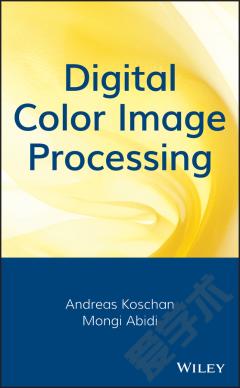Digital Color Management —— Encoding Solutions
----- 数字彩色管理:编码解决方案
From the Book: PREFACE: Digital color imaging is one of today's most exciting and fastest growing fields. As evidence, one only need consider that according to industry estimates, more digital color images were produced during the past year alone than the total number produced in all previous years! The excitement and phenomenal growth in the field are not surprising, because digital technology offers unprecedented capabilities for editing, manipulating, storing, and displaying color images. But that technology is not without problems. In particular: Many current digital imaging systems do not produce predictable color results. Most systems will not work with all of the different types of imaging devices and media now available. It is often difficult or impossible to successfully exchange digital color images among different types of systems. Although numerous solutions to these problems have been offeredgenerally in the form of color-management applications and image file format standardsnone has been entirely successful. This is a most serious concern, because until these problems are solved, the full potential of digital color imaging cannot be realized. We believe there is an underlying reason why these problems persist: The basic technology of color encodingthe representation of color in numerical formis not widely understood. While that is unfortunate, it also is understandable. The sciences of color and digital imaging are enormous in scope, and that has made it extremely difficult for equipment and media manufacturers, application developers, system designers, and others to findneededinformation. That is why we have written this book. Our objective was to produce a single text containing all the essential information required for a solid understanding of the technology of representing and managing color in the digital domain. The book is intended for scientists, engineers, programmers, and others who are interested in developing that understanding. While we expect that most readers will have some scientific background and a basic familiarity with digital imaging, we have not assumed any specific prior knowledge of color. For that reason, we have provided background information as necessary, and we have included explanations of all required color science. Among other benefits, a knowledge of digital color-encoding technology will allow the reader to comprehend fully such current topics as Photo CD System color, device-independent color, color interchange standards, and color- management systems. More generally, understanding the basic principles of numerically representing color is essential for anyone concerned with the successful input, storage, editing, interchange, and output of digital color images. We sincerely hope that those seeking information on this subject will find our book useful and interesting. Acknowledgments We wish to thank the following principal reviewers for their many helpful comments and suggestions: Paula J. Alessi, Ira A. Gold, H. Scott Gregory, Jr., Robert W. G. Hunt, John T. Keech, Thomas O. Maier, Elizabeth McInerney, Robert F. Poe, Michael R. Pointer, Charles Poynton, Chris Sears, John S. Setchell, Jr., and Michael Stokes. We also wish to thank Paul L. Day, Jr., Timothy Harrigan, and Cynthia A. Pellow for their assistance in preparing the photographic images used in this book and Frank R. Brockler for preparing the three-dimensional figures.
{{comment.content}}








 京公网安备 11010802027623号
京公网安备 11010802027623号